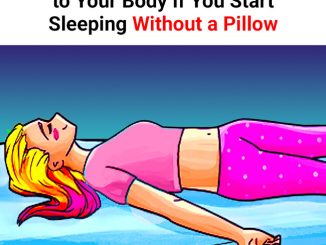Kensington Palace announced Wednesday that Kate Middleton, the Princess of Wales has undergone planned abdominal surgery at a private hospital in London and won’t be returning to her royal duties until after Easter.
Kate is expected to spend between ten and fourteen days at the hospital where she’s currently recovering. The Palace announced the surgery was successful.
The Princess apologized to the public for postponing her public duties.
“Her Royal Highness The Princess of Wales was admitted to The London Clinic yesterday for planned abdominal surgery. The surgery was successful and it is expected she will remain in hospital for ten to fourteen days, before returning home to continue her recovery. Based on the current medical advice, she is unlikely to return to public duties until after Easter,” the statement from Kensington Palace on its social media pages.
“The Princess of Wales appreciates the interest this statement will generate. She hopes that the public will understand her desire to maintain as much normality for her children as possible; and her wish that her personal medical information remains private.”
The statement continued: “Kensington Palace will, therefore, only provide updates on Her Royal Highness’ progress when there is significant new information to share. The Princess of Wales wishes to apologise to all those concerned for the fact she has to postpone her upcoming engagements. She looks forward to reinstating as many as possible, as soon as possible.”

Fans of the Princess, who has gained plenty of respect by her people throughout the years, expressed their well-wishes and hopes for her speedy recovery.
“Feel better soon, Catherine. Even while she’s not well, she’s worried about everything going on around her. You take care of you and I’m sure people understand the need to respect your privacy for your children. They would want the same for their own,” one of the comments read.
“Prayers for a successful recovery for the Princess of Wales and for her lovely family as they navigate this difficult time,” another person wrote.
“My thoughts and prayers are with her and her whole family,” a third added.
“14 days is a long stay, hope she’s ok,” someone else stated.
Upon being discharged from the hospital, Kate is expected to continue her recovery at the comfort of her home in Windsor where she and William moved in 2022.
At the same time, William also cut down on his engagements in order to be able to help around the children while his wife recovers from what was said to be a “non-cancerous” surgery.

Of course, William will receive help from the children’s long-time nanny, Maria Teresa Turrion Borrallo.
Borrallo has been with the family since Prince George was just 8 months old.
“She is not married and doesn’t have a boyfriend, as her life is totally dedicated to the family she is working with. She is known for being totally professional – married to the job,” an insider told Hello Magazine.
When the couple are away from home, the nanny makes all the decisions regarding the children.
Borallo was trained at the prestigious Norland College in Bath. “Maria is firm, but she never acts unilaterally with the children on discipline. Kate and William, along with Maria, are strict with the children but have this magic ability to appear not to be,” a royal insider said.

Kate has shared her feeling about hospitals and hospital stays in the past and said those are not “places she wanted to hang around in.”
Recalling the times she experienced extreme morning sickness following the birth of Princess George, Kate said, “I think, yeah I did stay in hospital overnight, I remember it was one of the hottest days and night with huge thunderstorms so I didn’t get a huge amount of sleep, but George did which was really great.”
She then added, “I was keen to get home because, for me, being in hospital, I had all the memories of being in hospital because of being sick so it wasn’t a place I wanted to hang around in. So, I was really desperate to get home and get back to normality.”
We wish Kate a fast recovery.
Unlocking the World’s Greatest Mysteries

The world is an enthralling place full of mysterious things that never cease to amaze us with their appearance and, of course, their mysterious uses. Ultimately, not all issues can be resolved with a quick Google search, particularly if you’re not sure exactly what you’re looking for.

There are many mysteries in the world every day that pique our interest and compel us to solve. We have access to online communities of investigators that share our enthusiasm for delving into these mysteries, all thanks to the power of the internet. Together, we can delve deeper into untold tales and unearth surprising facts as we explore the world’s amazing tapestry. The quest for knowledge has crossed geographical boundaries, putting a multitude of knowledge and experience at our disposal.
But amid the amazement and astonishment, a common reality surfaces: most of the time, things are not as remarkable as they initially appear to be. These are six intriguing discoveries that raised questions and yielded surprising revelations.
Is It Trash or Something Else?
In their rubbish drawer, an original poster discovered an enigmatic item. They referred to it as a “scoopy doodad” and looked to the internet for support and guidance. It was described as being incredibly heavy, having no markings, and having a little hole on top, raising the question, “What could it be?”

Netizens found that the response was surprising. What appeared to be an object was actually the nozzle of a vintage Sunbeam Mixmaster juicer attachment. A little sieve to remove pulp was attached to the wire portion.
5. A Found Old Cabinet
One user found an object in an antique cabinet that was completely composed of glass and had small holes running the length of it. They posted a picture of it online, curious about its intended use, and hoped for answers.

Many individuals quickly realized that a flower frog was the solution. This glass item served as a vase support for flower arrangements. Foam and gels had rendered it obsolete.
4. A Bulky Glass Item
A photo of a hefty glass object with a narrow hole on top and no markings was published on Reddit by another user. They pondered over its identification and looked for explanations.
An oil candle turned out to be the unexpected solution, as one astute netizen discovered. Who would have thought?
3. The Mysterious Item Covered in a Bedroom Drawer
A Reddit member discovered an odd item with a suede or soft leather bottom while searching through their bedroom drawer. Perplexed, they looked to the internet community for clarification.
Many were surprised to learn that the solution was a nail buffer. The original poster admitted to not taking good care of their nails and was shocked to learn this.
2. What’s Underneath Those Flooring?
A user shared a picture of a silver-colored device that looked like an old-fashioned scissor and questioned what it was used for. It was concealed beneath the floorboards of a house built in the 1800s.
An interesting response was given by a helpful netizen: it was used to take the top off of soft-boiled eggs. The accuracy of the response was promptly confirmed by another user.
1. An Improbable Hotel Room Discover
One visitor found a vertical slot inside their bedside table while staying at a hotel. Their goal intrigued them, so they looked to the internet community for solutions.
It turns out that the purpose of the slot was to hold a tablet or laptop while it charged overnight. It wouldn’t take up much space on the nightstand in this manner. A user who had asked about it at their own hotel verified the response. The initial poster immediately acknowledged how similar the hotel was to the one in Philadelphia.

The internet has given us the ability to collaborate and decipher the mysteries concealed behind seemingly commonplace objects in a world full of riddles. A few clicks away, there’s always something waiting to be discovered. So embrace your curiosity and explore the mysterious wonders all around you.



Leave a Reply